Shipping container homes have been growing in popularity as an alternative living space, celebrated for their potential in sustainability and affordability. The concept repurposes the steel rectangular boxes, once used to transport goods across vast oceans, into habitable structures. These containers offer a unique canvas for architectural innovation, from simple single-mod dwelling units to elaborate multi-story residences. Yet, the novelty of utilizing shipping containers as living spaces raises questions about their safety.
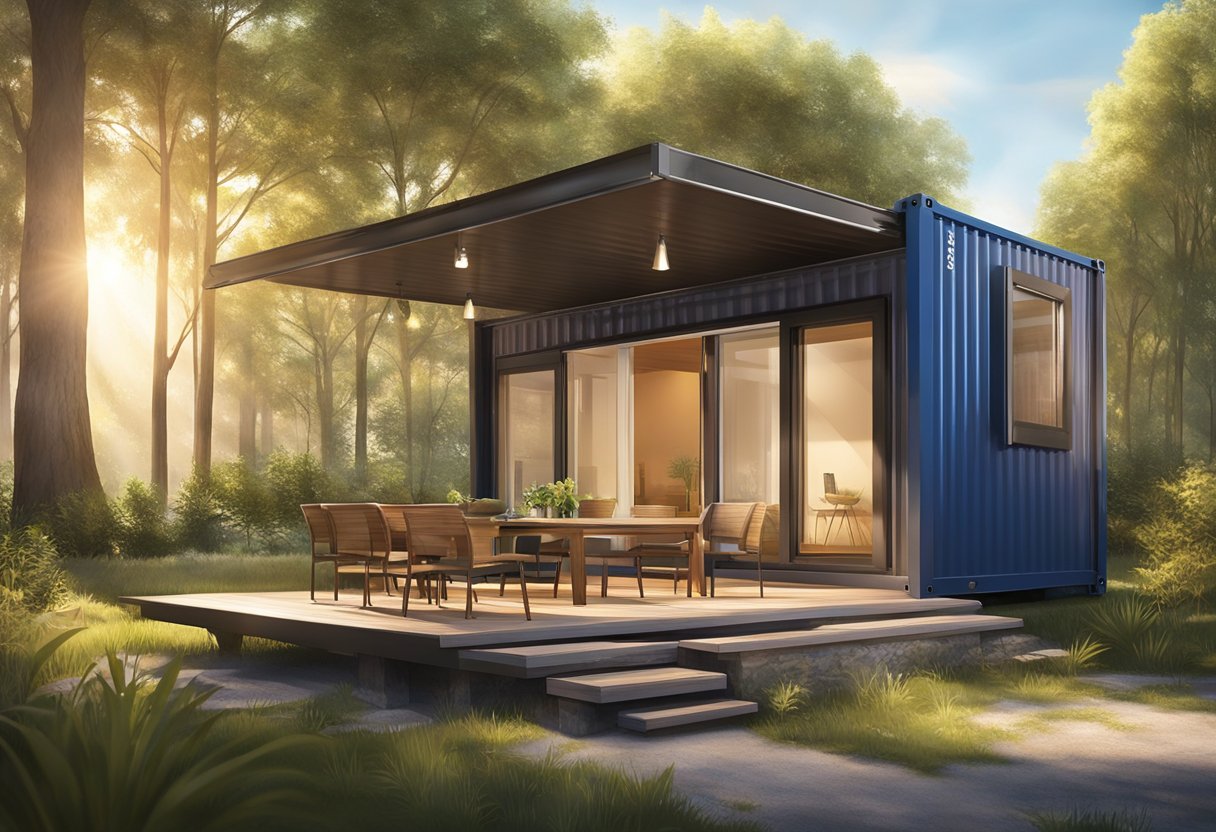
Safety concerns with shipping container homes touch on various issues, from structural integrity to the presence of toxic chemicals in the materials used in their original manufacturing. It is crucial to address such potential dangers in the design and construction phases to ensure a safe living environment. Container homes require modifications for adequate insulation, temperature control, and ventilation to sustain a comfortable and healthy living space.
Despite the challenges, container homes can be safe if built correctly. Professionals in architecture and engineering have developed ways to reinforce the containers’ structure and make them habitable, targeting concerns such as extreme weather conditions and seismic activity. Proper planning and execution can mitigate risks, transforming shipping containers into durable homes that meet or even exceed traditional building standards.
Safety and Compliance
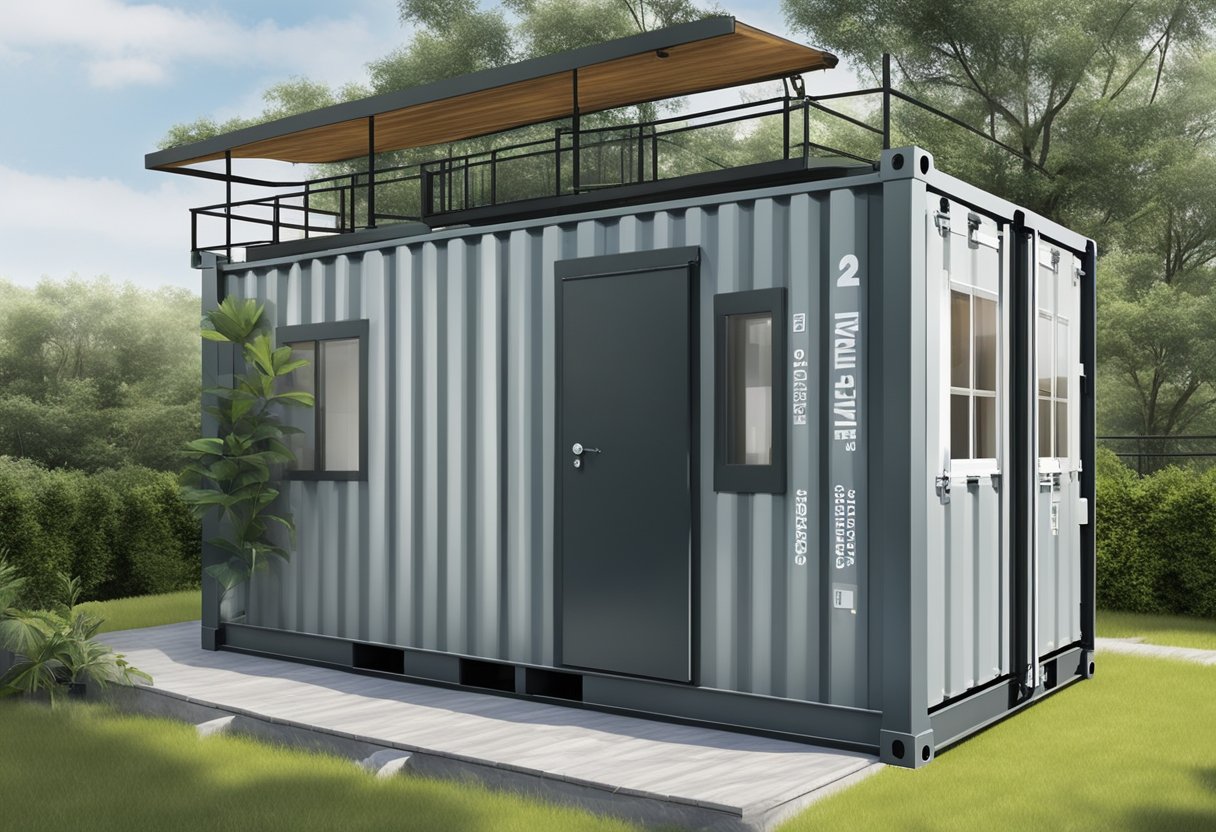
When considering the adoption of shipping container homes, potential homeowners must prioritize safety and compliance with local building codes. Attention to structural integrity, potential chemical hazards, and fire safety measures are imperative for a secure living environment.
Structural Integrity
Shipping container homes require careful assessment to ensure structural integrity. These structures are designed for durability and can withstand significant stress when properly engineered. It is essential that containers are inspected for rust and structural damage. Reinforcement may be necessary depending on the design of the home and the number of containers used.
Chemical Hazards and Treatment
The treatment of chemical hazards is a critical aspect of safety in shipping container homes. Containers are often coated in lead-based paint and may have floors treated with hazardous pesticides or chemicals. To mitigate risk, homeowners should seek containers labeled as “cargo-worthy” and take actions such as removing original paint, sealing floors, or completely replacing them with new, safe materials.
Fire Safety
Enhancing fire safety in shipping container homes involves several precautions. Due to the conductive nature of metal, these homes can be equipped with insulation materials like foam to reduce heat transfer. However, it’s essential to select non-flammable insulation to minimize fire risks. Installation of smoke detectors and adherence to electrical code standards further promote a fire-safe living environment.
Design and Customization
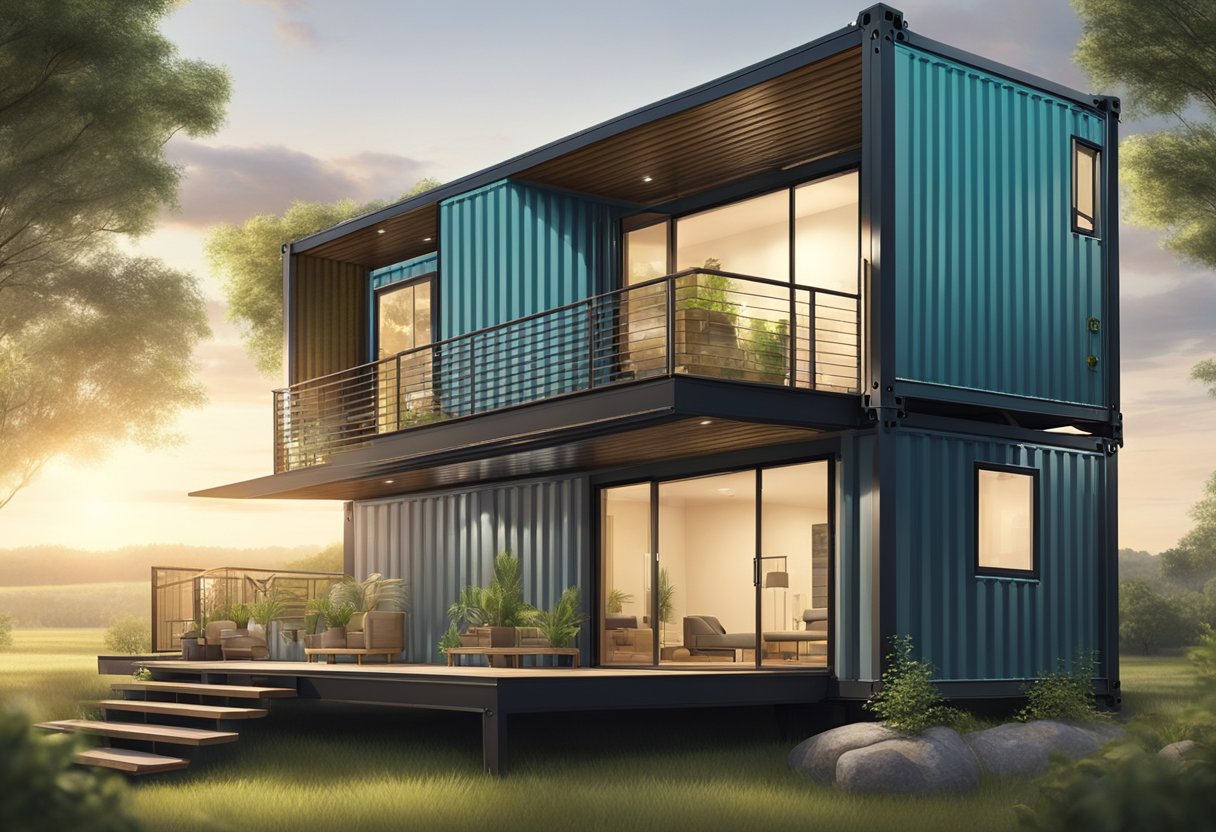
When considering a shipping container home, design and customization are critical factors. They afford homeowners the ability to tailor their living spaces to specific needs and preferences, within the confines of the container’s structural parameters.
Space Planning
In the realm of space planning, shipping container homes offer a clear grid to work with—a benefit for designers and homeowners. These structures necessitate innovative floor plans since the typical container dimensions are restrictive. Efficient use of space is paramount, leading to multifunctional areas and custom-built solutions that are both affordable and functional.
Windows, Doors, and Ventilation
Adding windows and doors affects both the aesthetic and practical aspects of shipping container homes. Proper placement ensures ample natural light and facilitates ventilation, a necessity for comfortable living. Each modification has to be carefully considered, as it can influence the structural integrity and security of the home.
Insulation and Temperature Control
Adequate insulation is a fundamental aspect of making a shipping container livable. It helps in achieving temperature control, an important element considering the metal structure’s propensity to conduct heat. Insulation must be effectively implemented to avoid extremes in temperature, making the tiny home comfortable across seasons.
Environmental Considerations
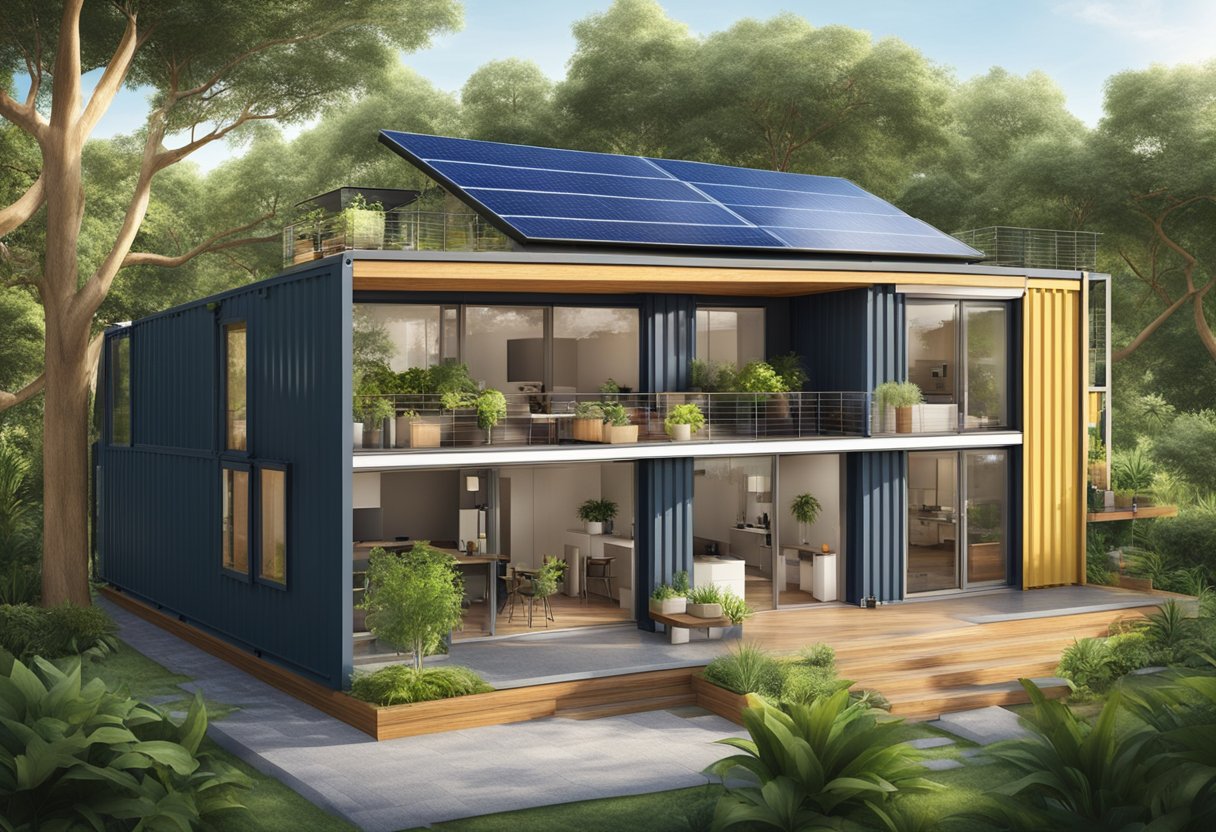
When considering the safety of living in a container home from an environmental perspective, it’s essential to evaluate the sustainability of the building materials and practices alongside the home’s energy efficiency and potential for eco-friendly living.
Sustainable Building Practices
Shipping containers, by nature, endorse sustainability through the recycling of existing materials. The re-use of these steel structures for housing prevents the usage of new resources, reducing the environmental footprint of construction. The incorporation of recycled materials into container homes bolsters the credentials of eco-friendly housing.
Energy Efficiency and Eco-Friendliness
Energy efficiency is paramount in assessing the eco-friendliness of living spaces. Container homes can excel in this area by integrating features such as high-quality insulation to curb energy consumption, especially in extreme climates. The metal walls may require modifications, but once insulated, a shipping container home can mitigate heat loss and gain. Further enhancement with sustainable technologies like solar panels transforms these homes into environmentally responsible dwellings.
Legal and Regulatory Factors
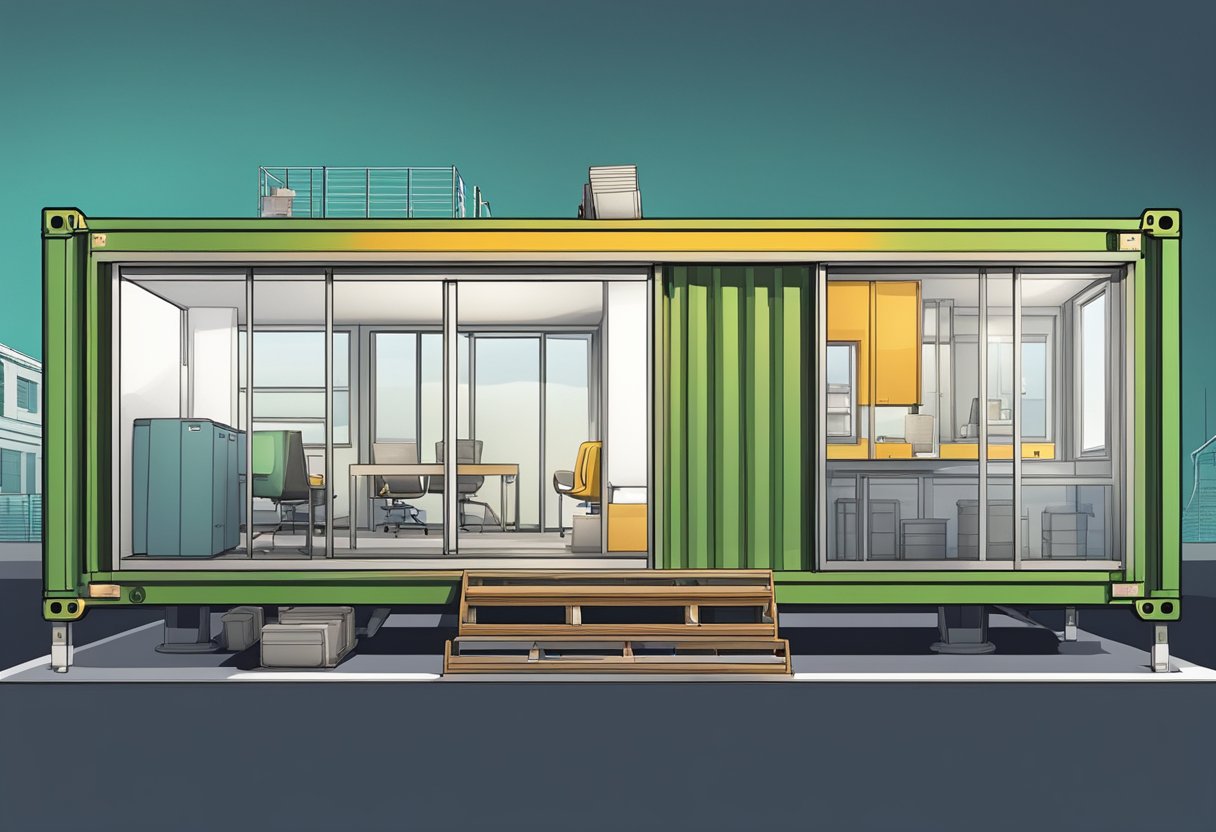
When considering the construction of a shipping container home, it is critical to understand the legal and regulatory landscape. Compliance with building codes and zoning regulations ensures the safety and legality of the structure.
Building Codes and Regulations
Building codes govern the construction details of shipping container homes, mandating standards for structural integrity and safety. They confirm that the modifications made to containers meet the necessary performance criteria. For instance, engineers and architects must collaborate to ensure that container homes withstand local environmental stresses, such as heavy snow loads or high winds, which can be dictated by state or regional building codes. The International Building Code (IBC) influences most local codes, which may require various levels of compliance based on the intended use of the structure.
- Structural alterations: Any cuts or modifications to the container’s structure require approval to maintain safety standards.
- Insulation and ventilation: Engineering solutions must comply with energy codes to ensure proper insulation and air quality.
Zoning and Land Use
Zoning requirements are essential to determine where shipping container homes can legally be built. Local land use policies dictate the type of structures permitted, which can vary widely from one jurisdiction to another. Researching the zoning ordinances is crucial before purchasing land or starting construction.
- Permitted land use: Not all zones allow for the erection of shipping container homes. It’s vital to ascertain if the intended area is zoned for residential use and if container homes are specifically allowed.
- Setbacks and density: Regulations may dictate the distance between structures and property lines, as well as how many residences can be placed on a parcel of land.
By meticulously navigating the complex regulations and zoning codes, prospective homeowners can ensure their container home is both compliant and safe.
Durability and Maintenance
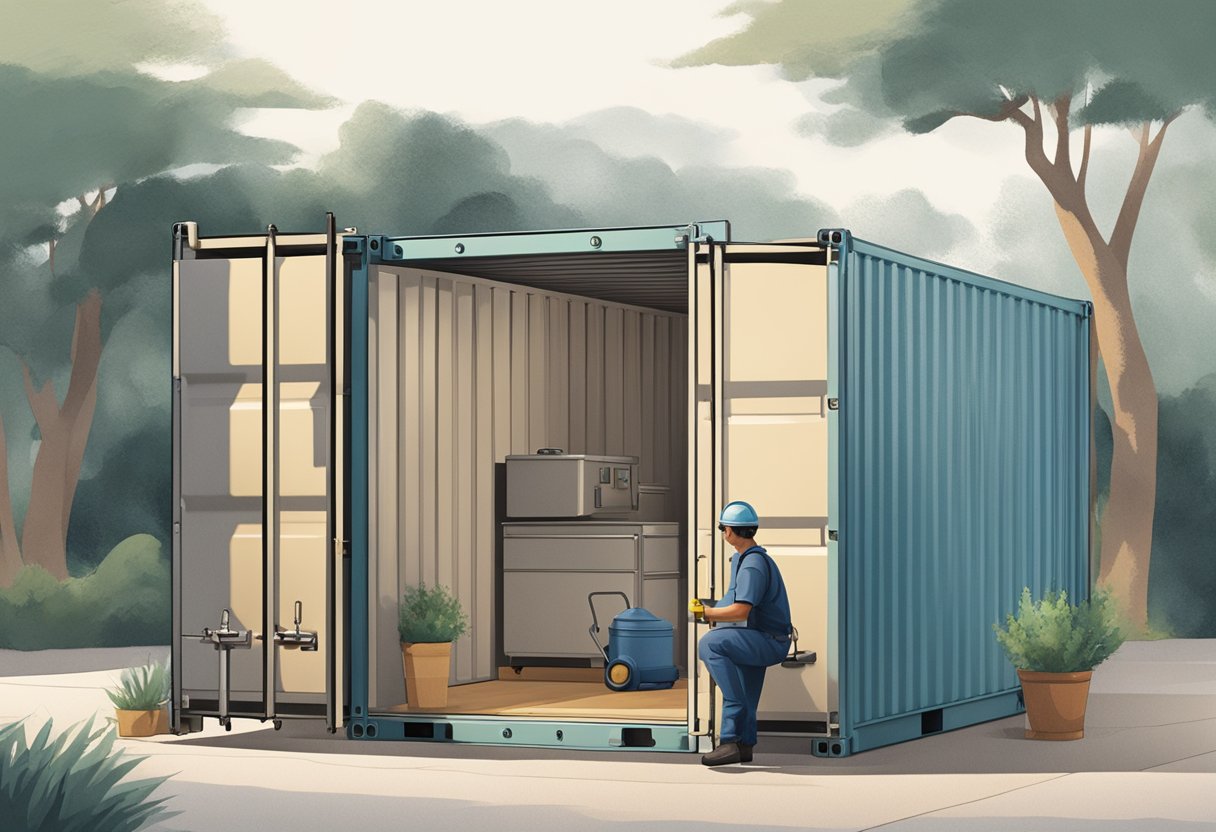
When considering shipping container homes, two critical aspects are their durability and the maintenance required to keep them habitable. These homes are known for their robustness, but just like any dwelling, they require regular maintenance to ensure longevity and safety.
Weather and Natural Disaster Resistance
Durability in the face of harsh weather conditions is a hallmark of container homes. They are engineered to withstand extreme conditions during sea transport, which translates into substantial resilience against storms and hurricanes. However, modifications and the quality of construction play a pivotal role in reinforcing this natural disaster resistance. Protecting the structural integrity from corrosion and reinforcing joins and openings are essential measures to maintain safety.
Long-Term Upkeep
The longevity of a container home can be extended with diligent maintenance. The lifespan, often exceeding 25 years, hinges on a thorough inspection and regular upkeep routine. A focus on preventing rust and insulation degradation is vital, especially in areas prone to extreme weather. Proactive measures include applying rust-resistant coatings and promptly addressing any weather-related wear and tear. Ultimately, attention to these details can greatly affect the durability and safety of a container home.
Security and Privacy
When considering living in a container home, one must assess the aspects of security and privacy with a keen eye. These homes can be tailored to ensure a secure environment through robust exterior safety features and high-quality locking mechanisms.
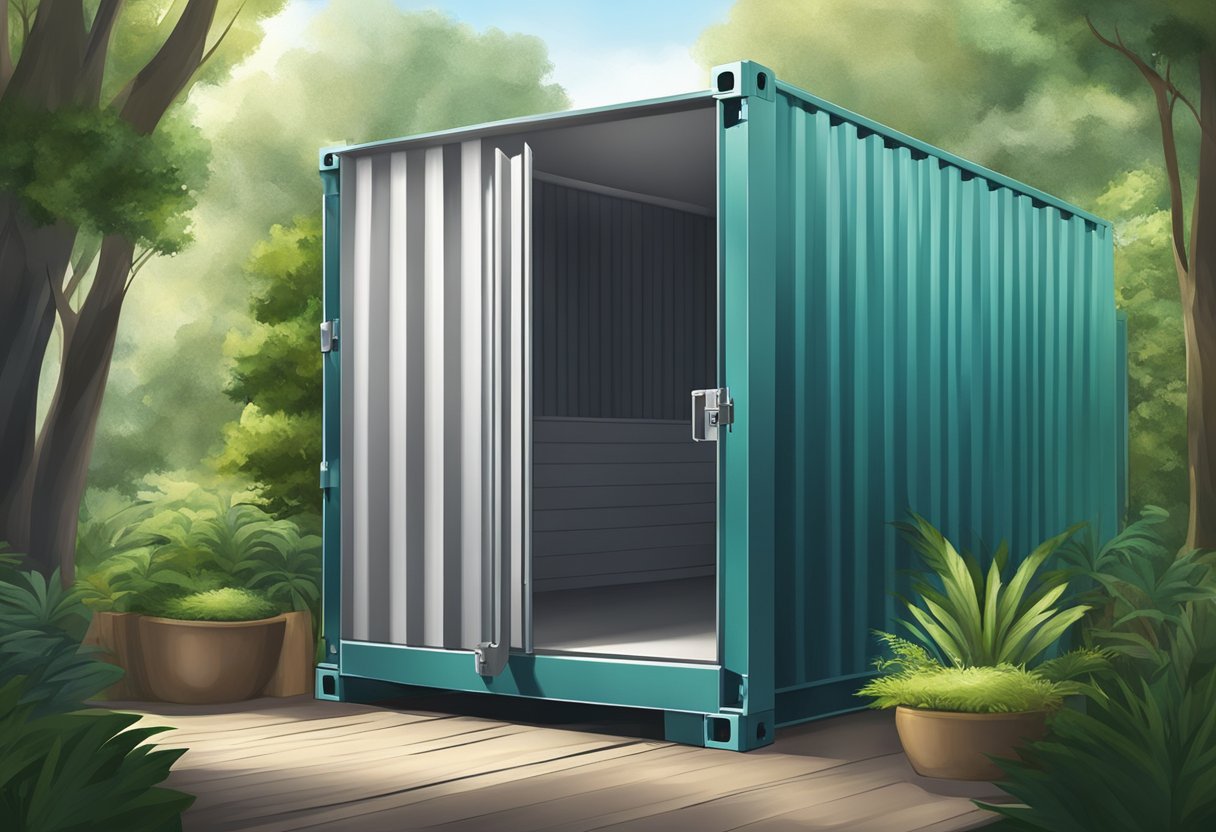
Exterior Safety Features
Container homes are often praised for their sturdiness, giving them a natural advantage in terms of security. The exterior walls of shipping containers are made from cor-ten steel, a material known for its strength and resistance to harsh weather conditions. This steel construction makes them inherently impenetrable to common burglaries, as opposed to traditional residential structures that may require additional security measures. Owners often enhance this security by incorporating grills or shutters on windows and reinforced doors to deter any potential intrusions. Moreover, privacy can be maintained through strategic placement of frosted glass or opaque materials in areas where visibility from the outside could be a concern.
Locks and Secure Access
The security of container homes can be significantly boosted with the installation of high-quality locks. Options range from traditional deadbolts to modern electronic access systems that may include features like keypad entry, biometric scanners, or smart locks that integrate with a home automation system. Such technologies not only provide secure access but also offer residents the convenience of remote management and monitoring. Additionally, installing a peephole or security cameras can add an extra layer of security, allowing residents to monitor who is accessing their home without compromising their privacy.
Cost Considerations
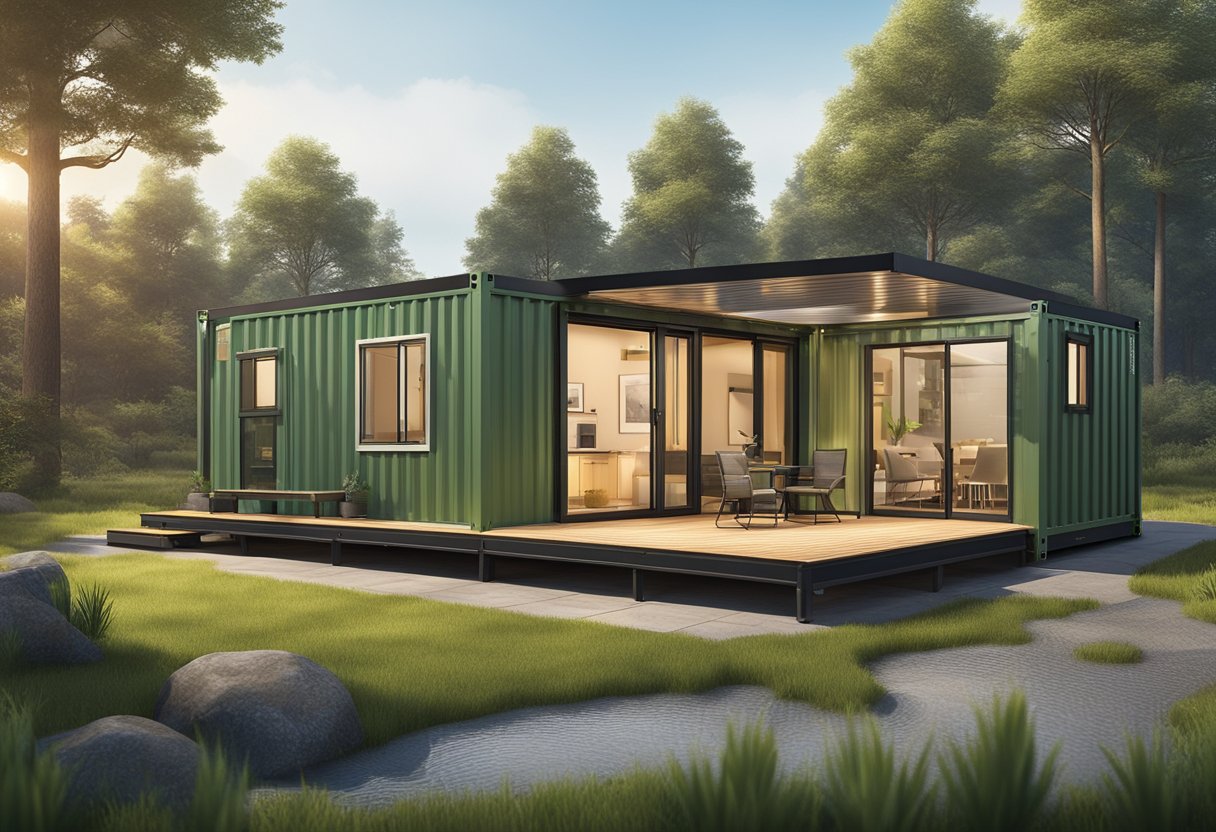
When considering the construction of a shipping container home, two critical financial aspects stand out: the initial affordability and potential long-term savings. This section breaks down these cost factors to better understand how shipping container homes can be a financially savvy option for homeownership.
Affordability and Budgeting
Shipping container homes are often highlighted for their affordability compared to traditional housing. The cost of constructing a shipping container home can vary greatly, with simpler designs starting as low as $10,000. However, for those seeking more luxurious finishes or larger spaces, the price can rise to approximately $35,000 and even reach an upper limit of around $185,000. When planning the budget, it’s critical to account for expenses such as the container itself, land, permits, foundation, utilities, and interior finishes. Because they can be more affordable than other types of homes, shipping container homes offer a pathway to affordable housing and homeownership, especially for first-time buyers or those with limited budgets.
Long-Term Financial Benefits
Investing in a shipping container home may yield long-term financial benefits. The robust structure of shipping containers can contribute to durability and a potential decrease in maintenance costs over time. Additionally, their modular nature allows for flexibility, meaning they can be expanded or modified with relative ease compared to traditional homes. This adaptability could translate to savings if the homeowner’s space needs change in the future. Furthermore, with innovative design, a shipping container home can incorporate energy-efficient features, leading to reduced utility bills and enhancing its value as a piece of affordable housing in the long run.
Practical Aspects of Container Living
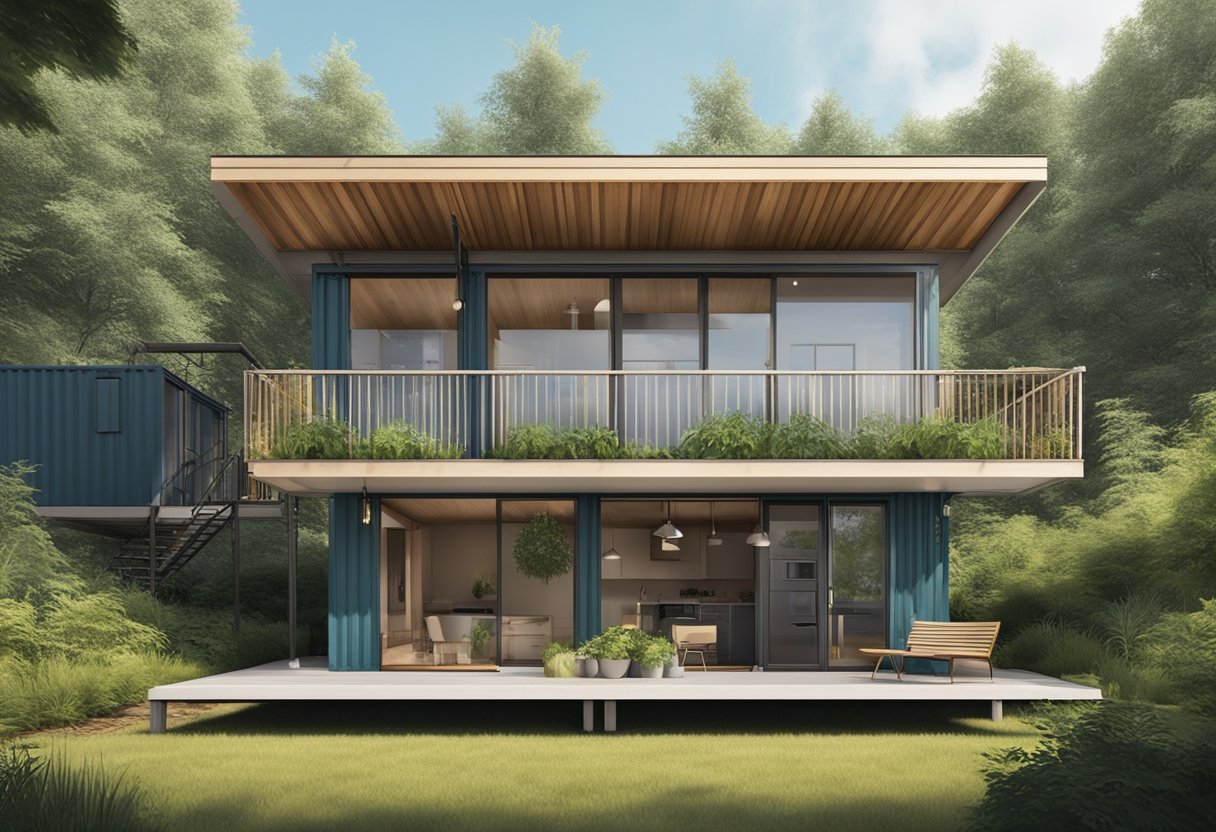
When considering container living, prospective residents must evaluate the spatial configuration and the integration of essential utilities. These evaluations are critical to ensure the practicality and livability of a container home.
Spatial Constraints and Flexibility
Shipping containers present a unique set of spatial constraints. The standard container dimensions dictate a limited space, often requiring inventive design solutions to maximize living areas. Despite the inherent limitations, container homes offer considerable flexibility; they can be stacked or combined to create larger, more complex designs. It is crucial to strategically plan the interior space to include multi-functional furniture and built-in storage to tackle the challenges of limited square footage.
Utility Connections and Services
Utility connections in shipping container homes must be carefully planned and executed. Connections for plumbing, heating, and cooling systems require professional installation to ensure they meet safety standards and regulatory codes. Plumbing must be insulated against extreme temperatures, especially in colder climates to prevent freezing. For heating and cooling, residents often consider eco-friendly options such as solar panels or insulation techniques to maintain internal temperatures and reduce energy consumption. It is important to confirm that local services can be connected to a container home before proceeding with development.
Market Trends and Opportunities

The shipping container market is evolving with a growing trend in repurposing these units for alternative uses including residential living and innovative storage solutions. They provide an unconventional yet increasingly popular housing option for homeowners and contribute to sustainable development in real estate.
Container Homes in Real Estate
Shipping containers are gaining traction as residential spaces due to their affordability, modularity, and portability. Homeowners are turning to container homes as a viable housing option, driven by the desire for minimalist living and lower environmental impact. Trends show a rise in these structures being listed on platforms like Airbnb, demonstrating their appeal to a market seeking unique and eco-friendly accommodation.
Alternative Uses for Shipping Containers
Apart from residential use, shipping containers are being transformed into dynamic storage solutions for both personal and commercial applications. They are being utilized as pop-up shops, office spaces, and studios, reflecting their versatility beyond sea-freight transport. Businesses are increasingly adopting this trend, appreciating the cost-effectiveness and speed of conversion of shipping containers into functional spaces.
Health and Safety Concerns
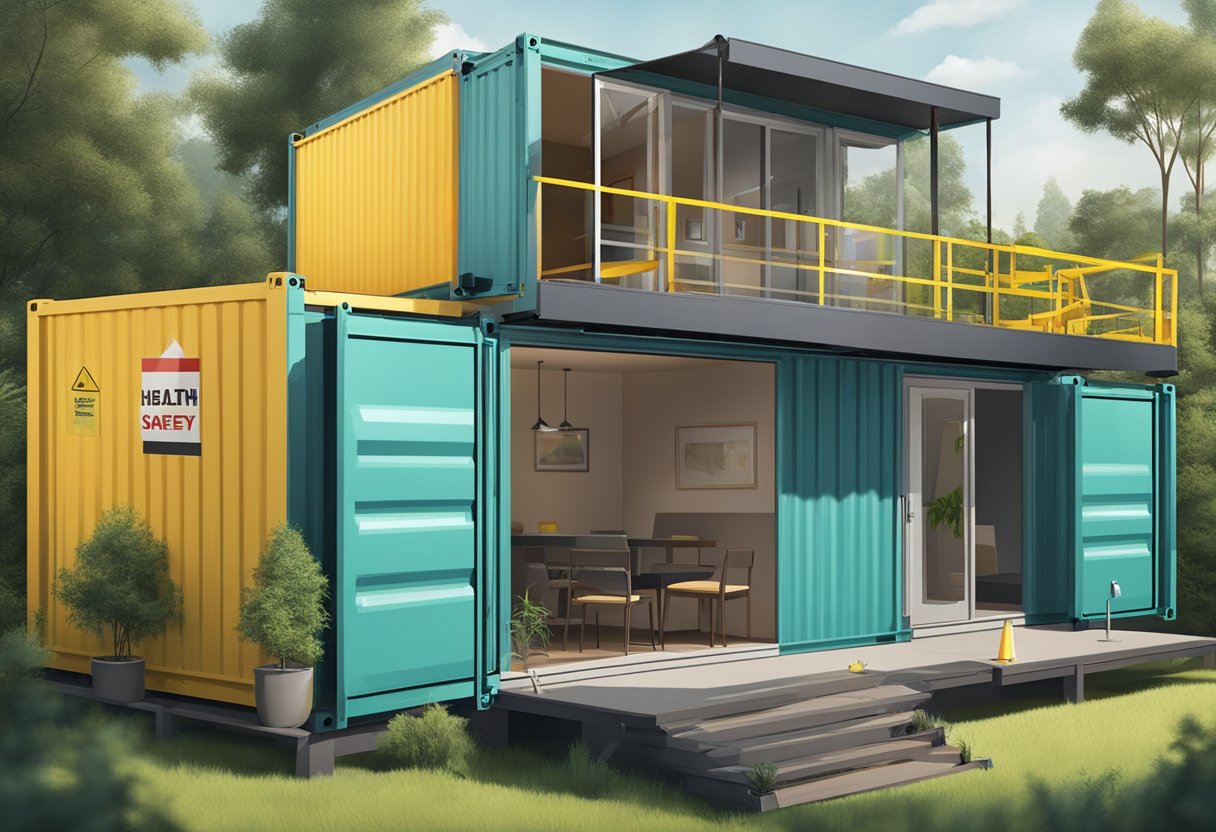
Living in a shipping container home comes with distinct health and safety concerns that must be addressed to ensure a safe living environment. These concerns primarily involve ventilation, the presence of harmful chemicals, and risks associated with heavy metals.
Containers are designed for cargo, not for human habitation, which means ventilation may be insufficient. Proper modification is crucial, as adequate airflow is needed to prevent condensation and mold from developing, which can lead to respiratory issues.
The use of lead-based paints and pesticides on container floors is a significant health concern, as these substances can be toxic. Containers should be inspected for such harmful chemicals before conversion. Safe living standards require the removal or sealing of these materials to prevent exposure.
Additionally, containers often have wooden floors that may contain pesticides or be treated with chemicals to protect goods during transportation. These treatments potentially release volatile organic compounds into the air, posing health risks to inhabitants.
Heavy metals, such as chromate or phosphorous within the paint, can also be harmful. These heavy metals can be inhaled or ingested through contact with hand-to-mouth activities, especially concerning for children.
To minimize these risks, it is essential to:
- Utilize professional-grade insulation to manage temperature and moisture.
- Ensure that paints and sealants used are free of toxic substances.
- Implement robust, mechanical ventilation systems to maintain air quality.
By adhering to relevant building codes and safety standards, and with proper design and maintenance, container homes can offer a safe living environment. It is imperative for potential residents to conduct thorough research and possibly engage with experts in container home conversion.
Construction Process and Materials
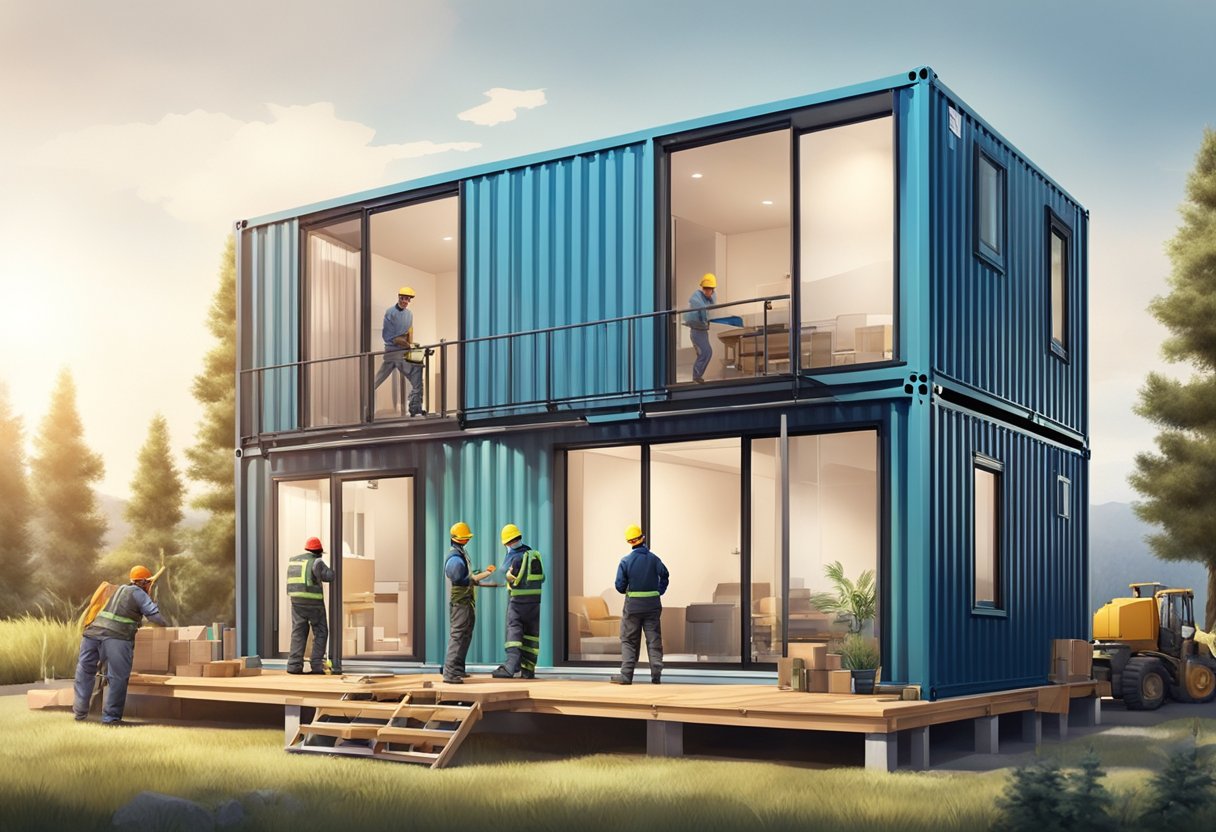
When building container homes, understanding the construction process and materials involved is essential. Steel shipping containers are the primary material used in these types of homes. Their inherent strength and durability make them particularly suitable for repurposing into residential spaces.
Foundation and Structure
- Foundation: Typically, a concrete foundation is laid to provide stability.
- Structure: The corrugated steel of the containers forms a robust shell.
Insulation and Interior
- Insulation: Proper insulation must be factored in to regulate the internal temperature and prevent condensation.
- Interior Walls: Gypsum board is a common choice, but builders might also use sustainable options like bamboo panels.
Flooring
- Wooden Floors: Many opt for wooden floors for warmth and aesthetics.
- Underlayment: A non-breathable flooring underlayment is recommended beneath the wooden floors to protect from moisture.
Windows and Doors
- Cutouts: Specialized tools are required to cut openings in the steel for windows and doors.
- Reinforcement: These openings then need to be reinforced to maintain structural integrity.
Building Materials
Builders often opt for low-VOC sealants and paints to ensure air quality within the tight seal of a container home. The selection of building materials is also guided by the goal to minimize environmental impact, choosing recyclable or sustainable options wherever viable.
Maintaining a balance between sustainability, safety, and aesthetics is crucial to the successful construction of container homes. The emphasis is on creating a livable space that adheres to building codes and withstands the test of time.
Advantages and Challenges
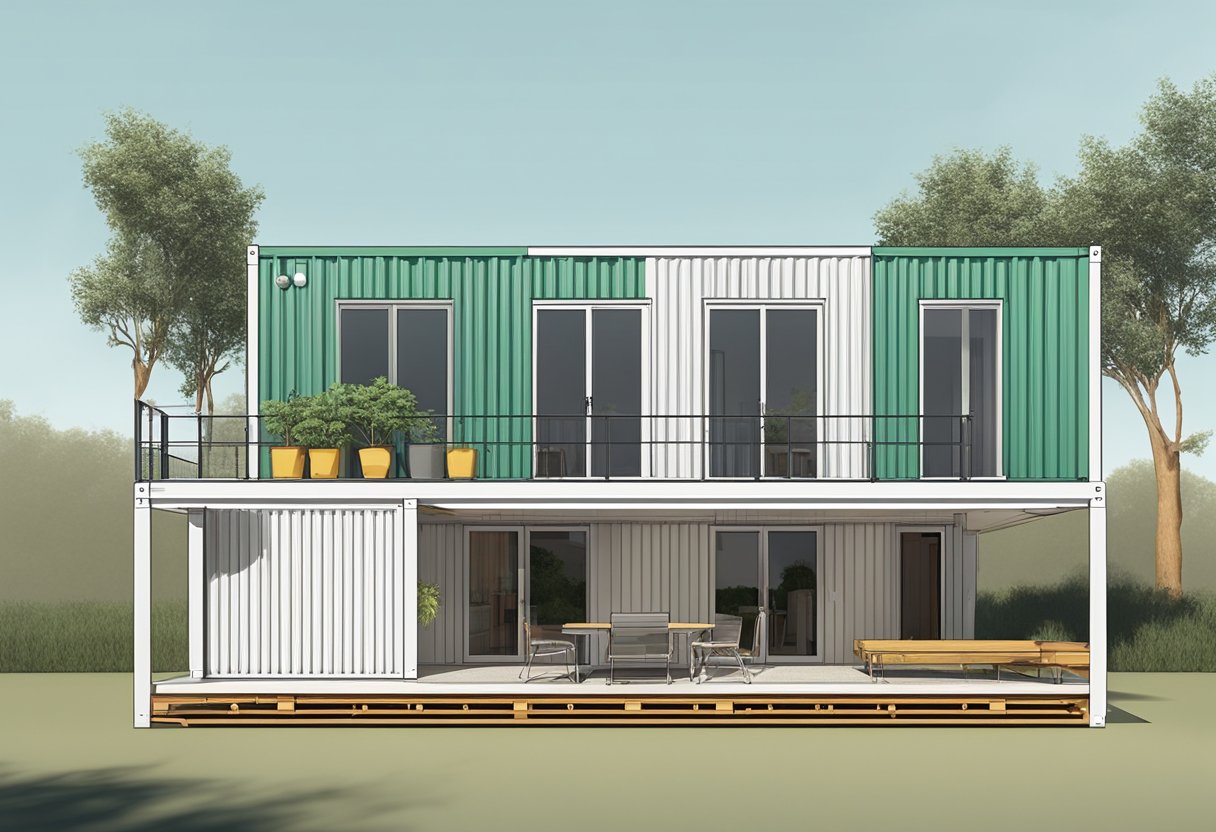
When considering the pros of living in a container home, durability stands out. Shipping containers are engineered to be highly durable, capable of withstanding extreme weather and heavy loads. This inherent strength translates to a certain robustness in a residential setting.
| Advantages | Challenges |
|---|---|
| Eco-Friendly: Containers are often recycled units, reducing waste. | Permits: Navigating building codes can be tricky. |
| Affordability: Construction costs are typically lower than traditional homes. | Insulation: Steel conducts heat, necessitating additional insulation. |
| Speed: As some homes come prefabricated, construction time can be shorter. | Space: Standard containers offer limited square footage. |
Yet, the involvement of a knowledgeable engineer or contractor is crucial to ensure a container home meets local building standards and functions well for daily living. Their expertise can help overcome common challenges such as obtaining building permits and modifying the structure adequately for habitability.
Living in a container home does involve ongoing maintenance, particularly in terms of managing rust and ensuring proper insulation. While the steel is durable, without proper treatment and upkeep, it can degrade over time.
With respect to contractors, finding one with experience in container homes is beneficial. These professionals can creatively use the space while addressing structural integrity, insulation, and other customization requirements.
In summary, container homes present a mix of unique advantages and potential challenges that potential homeowners should consider carefully before deciding on this alternative living solution.
